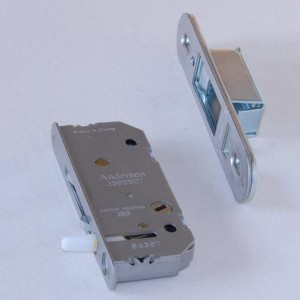Factory anti-fingerprint steel mortise door lockbody
Product Description
Used to replace damaged or missing mortise lock in hinged doors. Used by many aluminum door manufacturers.24mm (.945") face plate
Constructed of steel component with some parts in stainless finish
Does not include handle(s) or spindle to operate the lock. Only the lock body.This mortise lock is constructed of steel components with some parts being stainless finish. It features reversible latch and 8mm spindle size. This is a 2pt lockbody and cannot be connected to other locking point. This product does not include any interior/exterior handle(s) and cylinder lock. The product contains installation manual and other accessories including M5 cylinder fixing screw, 8gx7.5 scrwes, 2mm latch packer, and latch wear pad.
Each type of lock is built differently, but let’s take a look at the anatomy of a typical door lock usually used in homes or light commercial buildings. The main parts of a door lock are the cylinder, bolt, box and strike plate.
It’s useful for any DIY-er to know how things around the home operate. Understanding the different parts that work together to make a door handle and lock work, can help you fix minor problems on your own.
Remember, if you’re having problems with a sticky or faulty door, knob, handle or lock, trust us to help.
Technology has brought vast improvements to home and commercial security. In particular, businesses are increasingly interested safeguarding their property by upgrading locks and installing security systems. Electronic locks are just one of the great new options on the market.
The cylinder, or lock body, is the part of the door lock where you insert the key. When it’s locked, the cylinder engages a series of spring-loaded pins which keep the cylinder from turning. When you insert a key, the uneven edge pushes the pins upward to fit the key’s height in that location within the lock body. Essentially, it recognizes the correct key when the pins move into their proper places. This “opens” the cylinder, allowing the bolt to move, and you to open the door.







